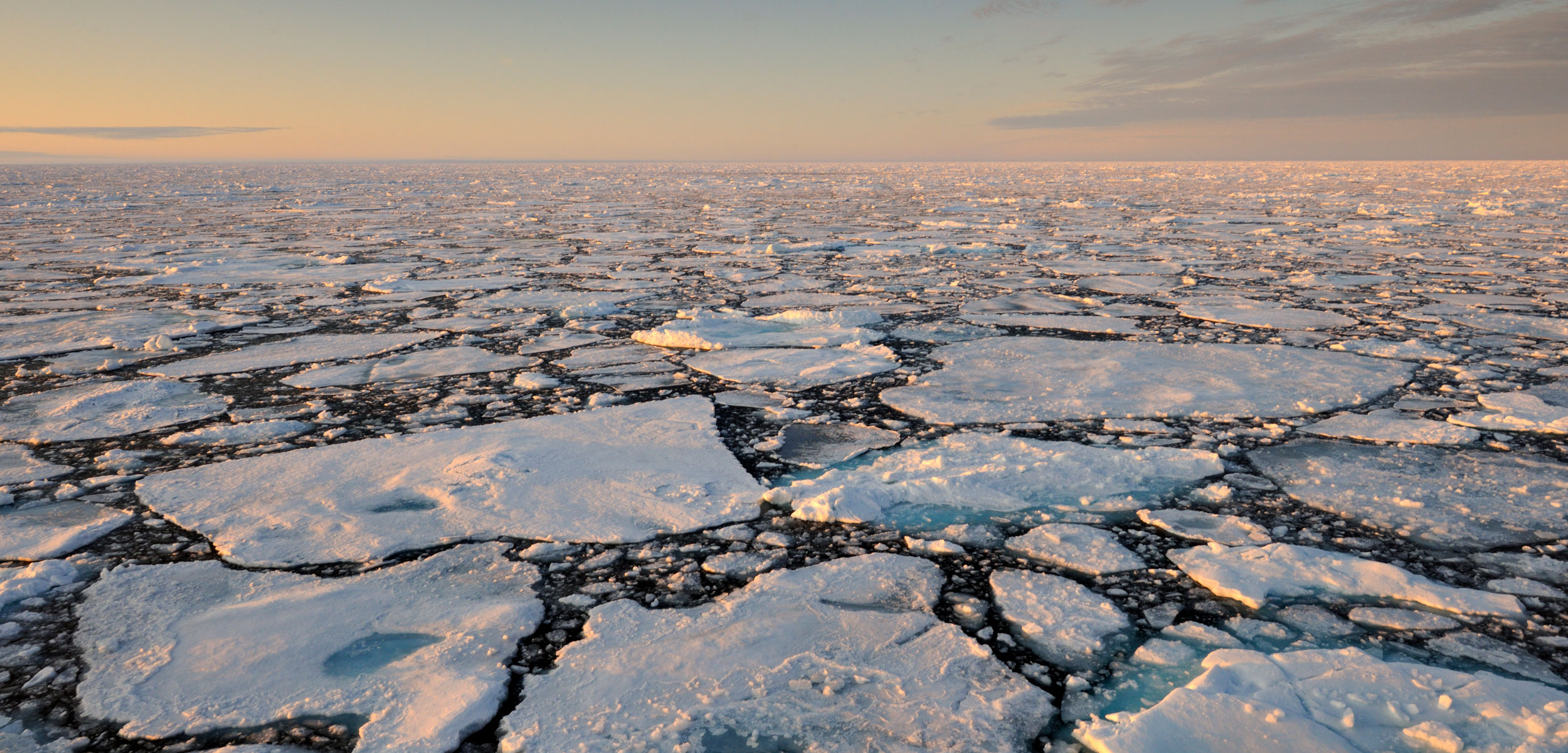Floating Ice Dampens Waves, Helps Preserve Itself
New research explores how small particles floating in water sap energy from waves, weakening the ice-shattering power of the sea.
Article body copy
Roiling ocean waves crash against floating sea ice in the Arctic, breaking it into smaller and smaller pieces. As the ice cracks apart, it yields large stretches of open ocean that give the wind more room to generate bigger waves. Scientists worry climate change could result in positive feedback as deteriorating sea ice leads to larger waves, which lead to further fragmented ice.
However, new research by Bruce Sutherland, a University of Alberta physicist who specializes in fluid dynamics, shows that there’s a quirk to how sea ice and ocean waves interact that could spell some good news for Earth’s dwindling polar ice caps.
In laboratory experiments, Sutherland studied how small particles floating in water affect the behavior of waves. Using small gel spheres to stand in for sea ice, Sutherland found that when small particles are exposed to waves, they will push and pull apart like an accordion.

Small particles floating in ice have a dampening effect on the energy in waves. Video courtesy of Bruce Sutherland and Neil Balmforth
When the particles are together, the amount of energy needed for the liquid to pass through the small gaps between them drains the wave of its energy. The tight compression of the ice particles functionally makes the sea thicker, he says. The process is similar to how it’s much harder to draw water through a thin straw than a thick one.
Sutherland’s research shows that relatively small solids, such as shards of broken sea ice, in a liquid can sap the energy from a wave. This could somewhat mitigate the ice-shattering power of waves.
In separate research, Dany Dumont, a physical oceanographer at the Université du Québec à Rimouski, studied a similar interaction in the field. His research, performed at the St. Lawrence estuary in Quebec and Eclipse Sound in Nunavut, also showed a dampening effect when a wave hits floating ice, and he is considering possible explanations for this phenomenon.
Walt Meier, a sea ice expert with the National Snow and Ice Data Center, based out of the University of Colorado, says these studies are good news, but that the effect likely won’t offset the myriad other factors leading to the decline in sea ice, such as human-caused climate change.
“There’s some mechanical breakup due to waves, but that’s just one factor,” Meier says. “It might slow things down a bit, but I don’t think it will save us.”

